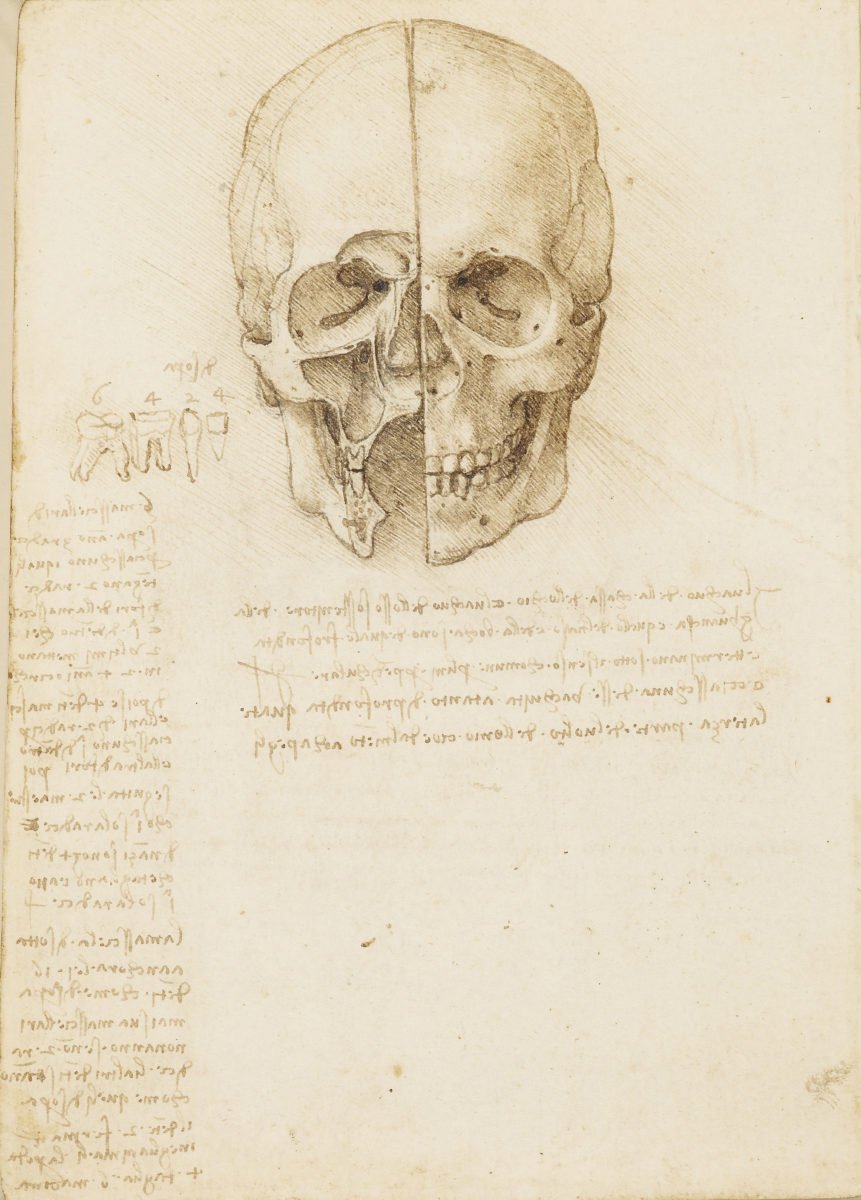
Today, a dozen museums across the UK are simultaneously opening “Leonardo da Vinci: A Life in Drawing,” an exhibition of the famed Renaissance artist’s work to mark the 500th anniversary his death, on May 2, 1519.
The coordinated British exhibitions—which are part of a larger worldwide celebration of the artist, inventor, architect, and all-around genius—draw from the UK’s Royal Collection Trust, which has sent a dozen drawings from Windsor Castle to each of the 12 participating institutions.
Leonardo made “more drawings than any artist of the period” and “more words in manuscripts than anyone from the period in any field,” Martin Clayton, the head of prints and drawings at the Royal Collection Trust, told the Art Newspaper. “You can grasp the whole Leonardo by looking at the drawings.”
Leonardo da Vinci, The Head of Leda (circa 1505–08). Courtesy of the Royal Collection Trust/©Her Majesty Queen Elizabeth II 2018.
To determine which drawings went to which museums, the trust organized 12 batches of works, each balanced to reflect Leonardo’s wide range of interests, and had the institutions choose the sets at random. Highlights include Leonardo’s “invisible ink” works, a skull cross-section featuring his signature “mirror” writing, and two drapery studies for Salvator Mundi, now the most expensive painting ever sold.
Queen Elizabeth II inherited an impressive set of more than 500 of the artist’s drawings, originally contained in a bound album and compiled by sculptor Pompeo Leoni after Leonardo’s death. It was later purchased by King Charles II.
Following the current exhibitions, an additional 200 drawings will go on view at the Queen’s Gallery in London in May. The UK’s year of Leonardo will wrap up at the Holyroodhouse in Edinburgh, with a show of another 80 drawings opening in November. The trust hopes that audiences across the country will be able to enjoy these historic works—some 34 million people, or about half the nation, live within an hour of one of the venues.
Altogether, it’s the biggest Leonardo drawings show since a Royal Academy of Arts exhibition in 1952, which marked the 500th anniversary of the artist’s birth.
Leonardo da Vinci’s Studies of Hands for the Adoration of the Magi, sheet two (around 1481), under ultraviolet light. Courtesy Royal Collection Trust/Her Majesty Queen Elizabeth II.
Other exhibitions around the world will also mark the momentous anniversary. In New York, the Metropolitan Museum of Art launched a modest display of four drawings by Leonardo this week. In France, at the Château de Clos Lucé, where Leonardo died, a tapestry copy of The Last Supper will be on loan from the Vatican Museums starting in June. (Later in the year, it will travel to the Palazzo Reale in Milan.)
The French region will also host a 500th anniversary show at the Château du Chambord (Leonardo may have been its architect) with works by the artist borrowed from the Louvre, the British Museum, and the Uffizi Gallery in Florence.
Leonardo da Vinci, The Last Supper (1495–98). Santa Maria delle Grazie Church, Milan. Public domain/Creative Commons Attribution-Share Alike 4.0 International license.
Milan, where Leonardo created The Last Supper, is getting in on the action with “Leonardo and His School in the Ambrosiana’s Collections,” a quartet of exhibitions that will run consecutively at the Pinacoteca Ambrosiana through January 2020. And the city’s Castello Sforzesco will host “Leonardo and the Sala delle Asse between Nature, Art and Science,” another drawings exhibition, starting in May. The museum’s Sala delle Asse, sumptuously decorated with Leonardo’s nature-themed wall paintings, also reopens to the public on the anniversary of his death, even as restoration is ongoing.
Elsewhere in Italy, Leonardo’s longtime home, Florence, will host an exhibition about the artist and his books at the Museo Galileo in April, while the Palazzo Strozzi presents “Verrocchio, Master of Leonardo.”
Vinci, where Leonardo was born, will explore how the local area influenced his work in a show opening at the Museo Leonardiano in April. Finally, the Gallerie dell’Accademia in Venice will break out the rarely exhibited but instantly recognizable drawing The Vitruvian Man.
Christie’s employees in front of Leonardo da Vinci’s Salvator Mundi. Photo by Tolga Akmen/AFP/Getty Images.
The year will culminate with “Leonardo da Vinci” at the Louvre, which opens in October and has been ten years in the making. It is billed as the most comprehensive exhibition ever dedicated to the acclaimed artist. The museum already owns five of the 15 extant Leonardo paintings, including, of course, the Mona Lisa, and will augment its holdings with significant loans. Originally, that was due to include Salvator Mundi from the Louvre Abu Dhabi, but that now seems unlikely to happen.
“Leonardo da Vinci: A Life in Drawing” is on view at the Ulster Museum, Belfast; the Birmingham Museum and Art Gallery; the Bristol Museum and Art Gallery; the National Museum Cardiff; the Derby Museum and Art Gallery; the Kelvingrove Art Gallery and Museum, Glasgow; the Leeds Art Gallery; the Walker Art Gallery, Liverpool; the Manchester Art Gallery; the Millennium Gallery, Sheffield; the Southampton City Art Gallery; and the Sunderland Museums and Winter Gardens, from February 1—May 6, 2019.
“Leonardo da Vinci: a Life in Drawing,” is on view at the Queen’s Gallery, London, from May 24–October 13, 2019.
“Leonardo da Vinci: a Life in Drawing“ is on view at the Queen’s Gallery, Palace of Holyroodhouse, Edinburgh, from November 22, 2019—March 15, 2020.